How to grow luffa and can you make washcloths from it?
Luffa is a herbaceous vine of the Cucurbitaceae family. It is considered not so much a garden plant as a technical plant: washcloths are made from the ripe fruits of this plant.
Despite its tropical origin, luffa is also grown in our climate. Most often by seedling method, since the plant has a long growing season.
Growing luffa
Luffa is not planted in beds: for the needs of one family or for landscaping a plot, it is enough to grow one or two plants. Seeds sown in cups or peat pots filled with a mixture of high peat, leaf soil and sand are guaranteed to sprout, but in open ground they may not awaken, responding to changes in weather, temperature and soil moisture.
Sowing seeds for seedlings
Do not try to sow seeds for seedlings early: a fast-growing vine in a pot suffers from nutritional deficiency, and after transplanting into open ground, it adapts to new conditions worse than small seedlings.
30-day-old luffa seedlings are planted in open ground at approximately the same time as cucumber seedlings, so the seeds are sown in cups in the first or second decade of April. A week before sowing, the seeds are heated in the sun, treated in a solution of a growth regulator (epin-extra, zircon) or soaked in aloe juice for half an hour.
Seeds are planted one at a time in moist soil to a depth of two centimeters, the cups are covered with plastic wrap and placed in a very warm place (plus 30 degrees). Luffa seeds are quite large, but you still shouldn’t expect 100% germination from them. For seedlings that appear after a week, the temperature is reduced to plus 20 degrees.
Planting in the ground and caring for garden moidodyr
Hardened seedlings are planted in open ground in May, when even at night the temperature does not drop below plus 15 degrees. If there are several plants, they are planted a meter apart from each other.
Immediately build a support (trellis) on which the vine will be fixed with tendrils. Despite this, it is advisable to tie the main stem to a support in several places. Choose a place for growing luffa that is well-lit and protected from the winds.
When digging, add up to a bucket of humus, 2-2.5 tbsp. spoons of superphosphate, according to Art. a spoonful of potassium sulfate and urea. Under each plant, dig a hole with a depth and width of approximately the bayonet of a shovel. If the soil is heavy or sandy, humus and compost are added to the hole and mixed with the soil. The seedlings are carefully removed from the cups and planted, deepening to the cotyledon leaves.
During the period of active growth, luffa is fed twice with nitrogen fertilizers (1-2 teaspoons of urea per 10 liters of water). The plant will not have rich greenery if the vine is not fed with organic infusions every two weeks: mullein (1:10), infusion of green grass.
It won't hurt to feed with ash infusion: a glass of 10 liters of water. Luffa is also fed with complex fertilizers for pumpkin crops.
The root system of the vine is superficial and rather weak: without regular watering, it can provide the plant with nutrition and moisture only in a tropical climate. We have to water it often (and only with warm water), and also spray it in order to create the effect of humid tropical air, at least for a short time.
In mid-summer, water twice a week. In autumn, water less often to speed up the ripening of fruits.
Luffa blooms in mid-summer. First, single female flowers bloom, then “bouquets” of larger male flowers. The female flowers will produce sponge fruits.
They will be even and large if, firstly, you regularly tie the vines to the trellis so that the fruits hang freely from them and are not deformed, and secondly, you remove some of the ovaries so that the remaining 5-8 fruits get more nutrition.
The side shoots are also removed, and the main shoot is pinched when it reaches 3-4 meters. Harvest the fruits before the first frost.
Making a loofah from luffa
Loofahs are grown mainly from the fruits of luffa cylindrical. The vines of this species produce fruits 60-70 cm long and weighing up to three kilograms. True, as they ripen, losing moisture, the fruits quickly lose weight.
The thin skin of ripe fruits is easily peeled off, exposing the spongy “inside”. Hard sponges are obtained from fully ripened fruits, while tender and soft sponges are obtained from slightly unripe fruits.
But the young fruits of the sharp-ribbed luffa are even used for food. They are added to soups, stews, salads, stewed, fried, seasoned with garlic. In Eastern medicine, porridge made from luffa and rice is used to treat coughs. Soups and salads are offered to patients to bring down a high fever. Luffa also helps with digestive problems.
How to make a washcloth: Shake the luffa fruit: if the seeds rustle in it, it is ready for processing. Trim the ends, sprinkle in the seeds and place the luffa in boiling water for ten to twenty minutes. After the hot procedure, the fetus easily “undresses.” Wash the resulting “blanks” several times in soapy water, rinse and dry in a ventilated area. After this, you can sew ribbons to them. And the washcloth from the garden is ready.
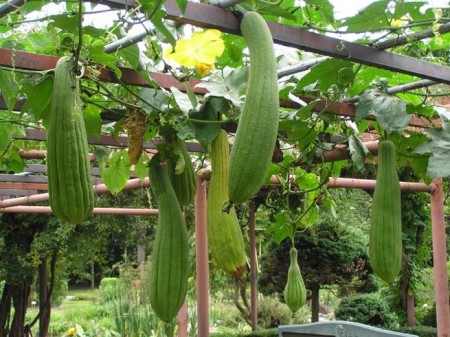
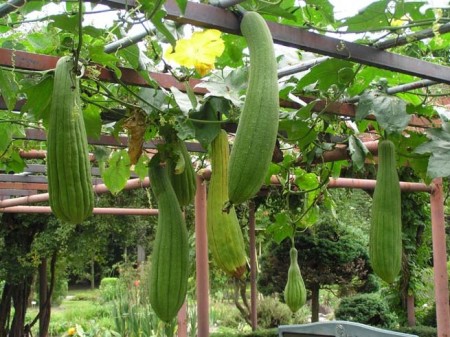
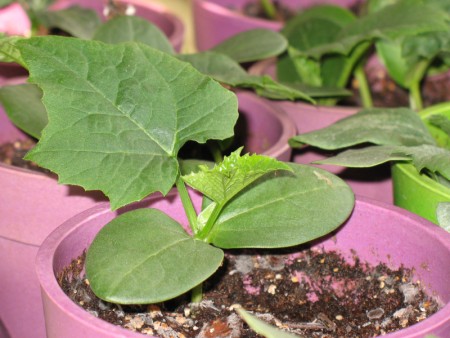
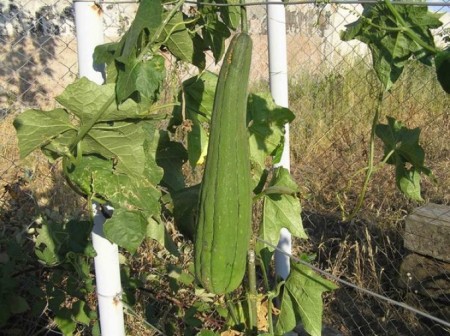
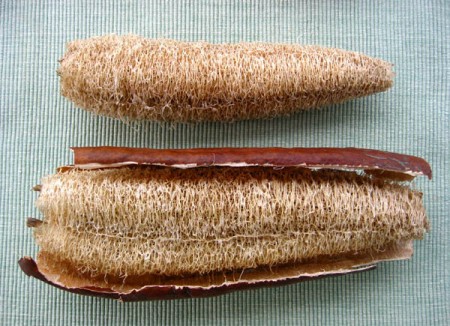

 (4 ratings, average: 4,75 out of 5)
(4 ratings, average: 4,75 out of 5) CUCUMBERS NEVER GET SICK, I'VE BEEN USING ONLY THIS FOR 40 YEARS! I SHARE A SECRET WITH YOU, CUCUMBERS ARE LIKE THE PICTURE!
CUCUMBERS NEVER GET SICK, I'VE BEEN USING ONLY THIS FOR 40 YEARS! I SHARE A SECRET WITH YOU, CUCUMBERS ARE LIKE THE PICTURE! You can dig a bucket of potatoes from each bush. Do you think these are fairy tales? Watch the video
You can dig a bucket of potatoes from each bush. Do you think these are fairy tales? Watch the video
 How our fellow gardeners work in Korea. There is a lot to learn and just fun to watch.
How our fellow gardeners work in Korea. There is a lot to learn and just fun to watch. Eye trainer. The author claims that with daily viewing, vision is restored. They don't charge money for views.
Eye trainer. The author claims that with daily viewing, vision is restored. They don't charge money for views. A 3-ingredient cake recipe in 30 minutes is better than Napoleon. Simple and very tasty.
A 3-ingredient cake recipe in 30 minutes is better than Napoleon. Simple and very tasty. Therapeutic exercises for cervical osteochondrosis. A complete set of exercises.
Therapeutic exercises for cervical osteochondrosis. A complete set of exercises. Which indoor plants match your zodiac sign?
Which indoor plants match your zodiac sign? What about them? Excursion to German dachas.
What about them? Excursion to German dachas.